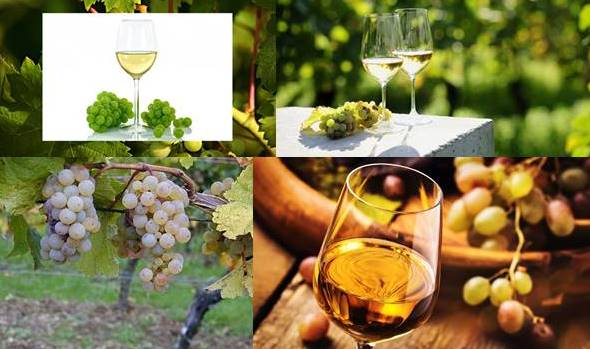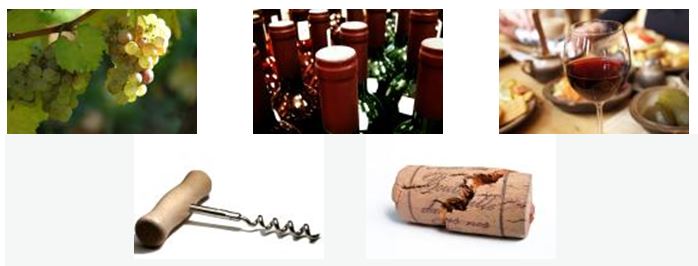
The history of the Riesling vine can be traced back to Germany and the year 1435. The first documented evidence comes from the cellar log of Count Katzenelnbogen at Ruesselsheim on 13th March 1435, when Klaus Kleinfish purchased six Riesling vines for the sum of 22 solidi. There are other supposed ‘first plantings’ but without the documented evidence: Wachau in Austria in 1232, Westhofen in Rheinhessen in 1402 and Alsace in 1348. An undocumented tale of Riesling from the 14th century has the Cistercian Monks at Eberbach disappointed in their light Rheingau reds compared to the French reds. Their instruction to their growers to remove all plantings other than the white vines ensured the spread of the Riesling vine. In 1464 the St Jacob Hospice in Trier purchased 1,200 ‘Ruesseling’ vines. 1490 sees another reference to ‘Ruessling hinder Kirssgarten’ (Riesling behind the cherry orchard) and a ‘Rissling wingart’ at Pfeddersheim in 1511 shows that Riesling was starting to spread.
The name Riesling seems a bit harder to clarify. ‘Russ’ means dark wood and this along with the grooved bark gives the resultant root word ‘rissig’. Another likely reference relates to Rieslings poor flowering in cold weather which is described by the German words ‘verrieseln’ or ‘durchrieseln’. Hieronymus Bock refers to Riesling in 1552 and also in a later version of his book on herbs in 1577 he mentions Riesling growing in ‘the Mosel, the Rhein and the environs or Worms’. In 1716 the Prince-Abbey of Fulda purchased the rundown Benedictine Abbey in Johannisberg in the Rheingau. 294,000 Riesling vines from Ruedesheim, Eberbach, and Floersheim were planted during 1720 to 1721 to replace the neglected plantings. Clemens Wenzeslaus, Elector of Trier, on 8th May 1787 proclaimed at all inferior vines be dug up and replanted with noble (Riesling) varieties.
By the end of the 19th century Riesling was the dominant variety in the Rheingau and was significant in the rest of Germany. The early 20th century saw Riesling declining in Germany with only 57% of the Rheingau planted to Riesling in 1930. This trend was reversed during the rest of the century and now Riesling is treated as a national treasure. The push is now to think of Riesling in Germany as you do Pinot Noir and Chardonnay in Burgundy or Cabernet Sauvignon in Bordeaux. The first reference to Riesling in Australia is in 1820. William Macarthur planted 20 acres of vineyards at Camden Park near Penrith in NSW. The commercial plantings included: Pineau Gris, Frontignac, Gouais, Verdelho, Cabernet Sauvignon, Riesling, Grenache and Mataro. October 1837 sees Johann Stein and 5 other ‘vinedressers’ arrive in Australia from Germany under a 5-year contract with William Macarthur and successfully introduce Rhine Riesling into Australia. Penfolds Wines purchases ‘Minchinbury’ in 1912 and expands the vineyards to over 400 acres of old and new varieties including: Verdelho, Riesling, Cabernet Riesling, Pinot Noir, Hermitage, Traminer and Pinot Blanc. Then we come to the 1970’s where the combination of the new invention called the wine cask and sweet fruity styles such as Gewürztraminer, Gewürztraminer Riesling, and Rhine Riesling ensured the Riesling boom in Australia. Incidentally, Angoves first introduced the wine cask in 1965.
The legend of sweet Riesling is generally accredited to Schloss Johannisberg in the Rheingau who ‘accidentally’ created their first ‘Spatlese’ or late harvest in 1775. The legend goes that the messenger bringing the official order to start picking was robbed on the way. By the time he arrived the grapes had rotted, been infected with Botrytis and were given to the peasants. The peasants brewed their own wonderful wines and the rest is history. It’s the Riesling grapes ability to develop high sugar levels while maintaining acidity that produces white wines that age very well. Riesling is produced from dry to very sweet. The sweet, botrytis affected wines are rated in ascending order of sweetness as: Auslese, Beerenauslese and Trockenbeerenauslese.
Riesling means different things to different people. In Australia the word Riesling has traditionally referred to any sweet wine variety. Stricter labelling laws now ensure that when you see Riesling on the label you do get Riesling. Riesling has suffered the unfortunate association with sweet, white cask wine. Only the last ten years or so has seen Riesling coming back into fashion as a crisp, clean white winedrink. The lime and citrus flavours in the cooler climate Rieslings make a wonderful summer drink.
A true Riesling in California is referred to as a Johannisberg Riesling. Gray Riesling and Emerald Rieslings are different varieties and Sylvaner is commonly called Sylvaner Riesling, Franken Riesling, Monterey Riesling and even Sonoma Riesling. Parts of Europe have a Welschriesling or Italian Riesling but this is a different variety. South Africans have Cape Riesling, Clare Riesling, Paarl Riesling and South African Riesling which are all really Cruchen Blanc. Weisser Riesling is what you have to look for to find a true Riesling. Even in Rieslings homeland Germany, Schwarzriesling is in reality the variety Müllerrebe (Meunier) and the variety Rulander is called Grauer Riesling. And to confuse matters even more, there are several Riesling hybrids of which the most famous is a cross between Riesling and Sylvaner called Müller-Thurgau. Other names that Riesling answers to in Germany include: Johannisberger, Klingelberger, Riesling Renano, and White Riesling.
And it’s not just the vines that have different names. The wine itself has many names in different countries including: Italy (Riesling Italico); Austria (Welschriesling); Hungary (Olasz Rizling); Rumania (Riesling de Italic); Bulgaria (Italiansky Rizling); Yugoslavia (Laski Rizling); Czechoslovakia (Rizling Vlassky) and Russia (Risling Italianski).
Notes
- Recent DNA fingerprinting has in fact determined that the grape was created by crossing Riesling with Madeleine Royale, not Silvaner (Ed)
- Reproduced with permission from Peter Svans at The Gurdies Winery
Source: Uncork Australia website
